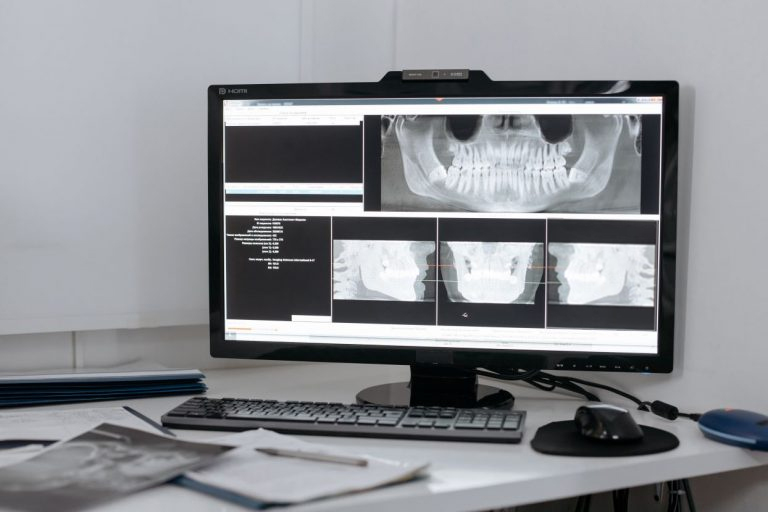Digital Dental X-ray
Digital dental x-rays, also known as digital radiography, have revolutionized the field of dentistry by offering a state-of-the-art imaging technology for evaluating a patient’s oral health. Utilizing electronic sensors and low levels of radiation, digital dental x-rays provide computer-generated images of a patient’s internal dental structures. These high-resolution images are essential for identifying and diagnosing oral health issues such as dental cavities, impacted teeth, and other dental abnormalities.
The Advantages of Digital Dental X-rays
Instant Imaging and Accessibility: One of the most significant advantages of digital dental x-rays is the speed at which the images can be obtained and viewed. The scans are sent directly to a computer, and dentists can instantly view them on a screen. This not only saves time but also allows for immediate assessment and treatment planning.
Elimination of Film Development: With traditional x-rays, film development in a darkroom was required, which could be time-consuming and environmentally unfriendly due to the chemicals used. Digital dental x-rays eliminate the need for film processing, making the process more efficient and environmentally conscious.
Enhanced Clarity and Detail: Digital dental x-rays produce clearer and more detailed images compared to traditional x-rays. This improved image quality allows dentists to detect even minor dental issues and provides a more accurate diagnosis.
Safer and Lower Radiation Exposure: Digital dental x-rays use lower radiation doses compared to traditional x-rays, making them safer for patients. This is especially important for individuals who require frequent x-rays or for children, who may be more sensitive to radiation.

Different Types of Digital Dental X-rays
Panoramic Dental X-ray: This type of dental x-ray captures a single 2-dimensional image of the entire mouth, including the upper and lower jaws, teeth, and surrounding structures. It is particularly useful for assessing overall dental health and identifying issues such as impacted teeth and jaw abnormalities.
Cephalometric Dental X-ray: Cephalometric x-rays provide a side view of the entire oral structure and facial skeletal profile, including the nasal and sinus passageways. It offers a comprehensive view of the jaw, mouth, and head, aiding in orthodontic treatment planning and assessing facial growth and development.
Periapical Dental X-ray: Periapical x-rays focus on a specific area and provide a detailed view of 2 to 3 teeth, from the root apex to the crown tip. These x-rays are essential for diagnosing tooth decay, gum disease, and bone loss around a specific tooth.
The Future of Dental Imaging
Digital dental x-rays represent a significant advancement in dental imaging technology, improving diagnostic accuracy and treatment planning. As the technology continues to evolve, it is likely that digital dental x-rays will become even more sophisticated, providing dentists with increasingly detailed and precise images. Additionally, advancements in artificial intelligence and computer-assisted diagnosis may further enhance the efficiency and accuracy of digital dental x-rays, benefiting both dental professionals and patients alike.
In conclusion, digital dental x-rays have transformed the way dentists diagnose and treat oral health conditions. With their speed, clarity, and reduced radiation exposure, digital dental x-rays have become an indispensable tool in modern dentistry.


